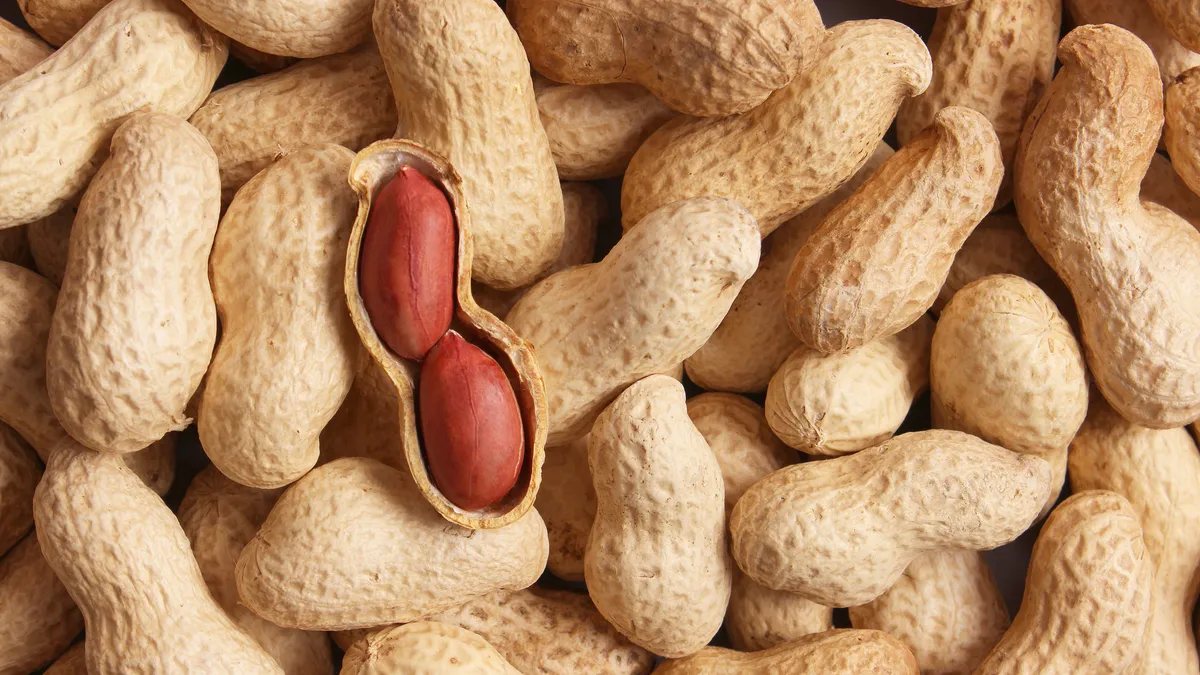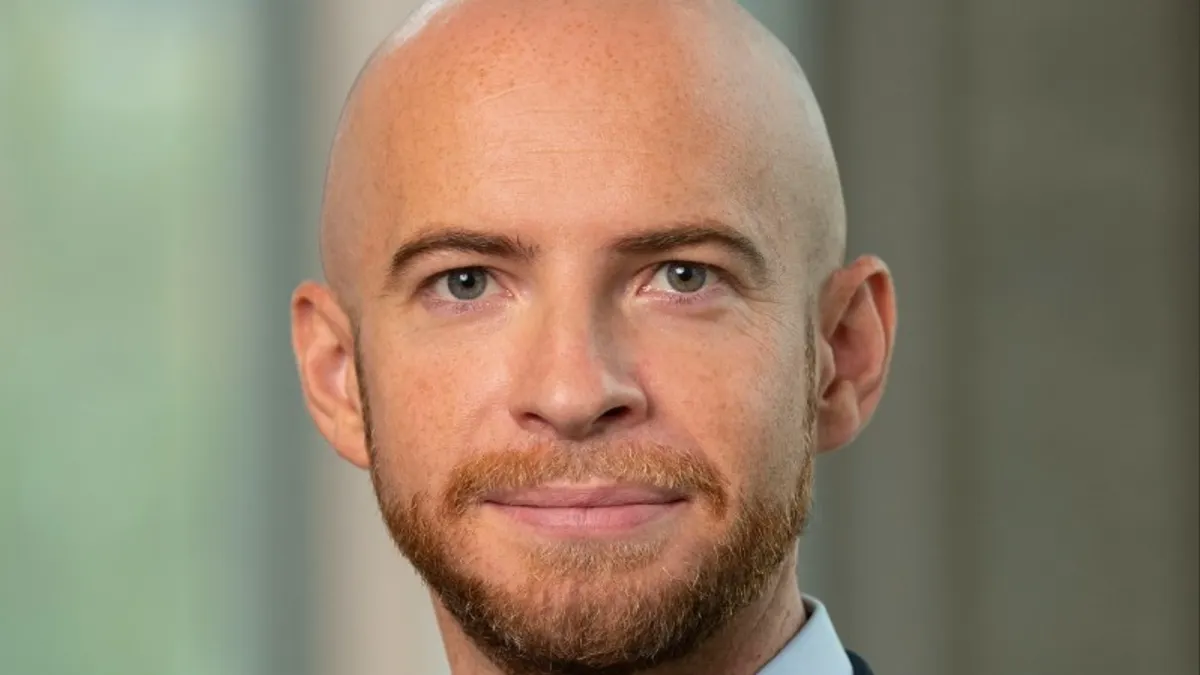Pharis Mohideen knows all too well how unfriendly the world is to those living with food sensitivities.
As a father of two children with severe peanut allergies, Mohideen remembers the measures he and his wife would take to ensure their children were safe — from uprooting their lives to move to a more accommodating school district, to avoiding long-distance travel out of fear of contaminated surfaces.

“I didn't go [home] to Hawaii for almost four years because we were deathly afraid of the flight where you can't stop if something happens,” Mohideen said. “We were told your son is super severe, and that scared the crap out of us.”
In 2018, when a position opened for chief medical officer at DBV Technologies, a clinical-stage biotech focused on developing pediatric food allergy therapies, Mohideen jumped at the opportunity.
Under the direction of then-chief scientific officer Dr. Hugh Sampson, a revered allergic disorder researcher, the company was developing a epicutaneous immunotherapy (EPIT) patch designed to decrease the severity of allergies in children. While the peanut indication was its priority, the company was also studying the technology for an array of other conditions, including pediatric milk-related allergies.
For Mohideen, who had a background in clinical development at Big Pharma’s Bristol Myers Squibb and Novartis, the Viaskin technology’s value was immediately evident.
“I told them I'm not an allergist — if you need an allergist don't hire me,” he said. “But if you need somebody who has lived it as a father for 20 years, who would absolutely bleed for this company because I've been through it and I know what it can mean for patients, I’m your guy.”
Within a year of Mohideen’s tenure, however, DBV faced an unexpected setback: a complete response letter from the FDA for its therapy in children ages 4 to 11. It was a “gut punch” Mohideen admitted, but it didn’t deter him or his team from seeing the product through.
Neither did the ensuing challenges — redesigning the patch, navigating communication with the FDA in the midst of a global pandemic, and watching lower-than-expected uptake of a rival product from Aimmune shake up investment in the space.
Now, that perseverance could pay off. Armed with positive results in patients ages 1 to 3 from a phase 3 trial that was published in The New England Journal of Medicine earlier this year, Mohideen finally sees “a clear path forward” toward approval, and eventually profit, for DBV’s peanut patch.
Cracking the nut
The FDA’s rejection of DBV’s treatment came in August 2020, just months after the regulator approved Aimmune’s peanut powder therapy Palforzia for the mitigation of adverse reactions from accidental exposure. In its letter, the FDA cited concerns that too many of DBV’s patches were falling off patients, potentially hindering the therapy’s efficacy.
Over several years, DBV worked with the agency to redesign the product from a square patch to a round one, while keeping the dosage at 250 micrograms of peanut protein, or 1/1000 of a peanut kernel. It also decreased the age range to between 4 and 7 years old, rather than 4 and 11, based on a data analysis that showed younger patients responded better to the treatment.
The only hitch was timing, Mohideen said. DBV was working with the same division of the FDA that was reviewing COVID-19 products, and because of that “things did not go as smoothly as anticipated.”
Despite the setback, DBV began a new 12-month placebo-controlled efficacy trial in March and is conducting a supplemental safety study per the FDA’s request. Altogether, Mohideen said he’s “expecting a top line somewhere around mid-2025” for the 4- to 7-year-old patient population.
Meanwhile, phase 3 trial results published earlier this year testing DBV’s original square patch for patients between 1 and 3 years old showed that after receiving the therapy, toddlers with more severe allergies could tolerate exposure to one peanut’s worth of peanut protein, while those with milder forms could tolerate three or four.
“We’re just over the moon with that data set,” Mohideen said. “We don't have to do another efficacy study — the FDA looked at that data and said, ‘Just give us a supplemental safety study six months in duration.’”
"You put the patch on and go about your daily business. It doesn't matter if you get sick or whatever [else is] going on."

Pharis Mohideen
Chief medical officer, DBV Technologies
While DBV is still ironing out details with the FDA, Mohideen said he expects the trial to take a year from recruitment to completion, with another 11 to 12 months after that before the FDA makes a decision.
That timeline might seem daunting when considering that the product’s leading competitor, Palforzia, has already been on the market for three years. But Mohideen argued that key differences in the delivery mechanisms between the two therapies, along with Viaskin Peanut’s likely indication in toddlers, gives it ample room in the market.
“We don't need them to lose for us to win,” he said.
A brittle market
However, Palforzia hasn’t lived up to the blockbuster predictions it once garnered.
When the patch hit the market, the food conglomerate Nestlé bet big, acquiring it for over $2 billion from Aimmune Therapeutics in 2020. But demand for the drug never reached those lofty expectations, and earlier this month Nestlé sold Palforzia at a loss to fellow Swiss company Stallergenes Greer.
Among experts’ explanations for Palforzia’s poor performance is the time commitment it requires from parents of its 4- to 17-year-old patients. Patients receiving the drug must frequently go to the doctor to gradually receive increased doses of peanut powder, providing a more standardized method to the “homebrew” immunotherapies allergists would commonly prescribe patients.
That’s where Mohideen sees a major advantage for DBV’s treatment — its simplicity of use.
“You basically apply one patch to the back of your child every day,” he explained. “You put the patch on and go about your daily business. It doesn't matter if you get sick or whatever [else is] going on.”
And the market for the product is huge. Roughly 1.5 million children in the U.S. under age 17 suffer from peanut allergies. According to DBV, that equates to approximately 100,000 patients with severe allergies eligible for the treatment in each age group, so roughly 300,000 patients between 1 and 3 years old and another 400,000 between 4 and 7 years old.
The major barrier, Mohideen said, is convincing stakeholders of the medication’s necessity, as it only decreases the severity of allergies, rather than eliminating them altogether.
“I was talking to someone in Europe who's a regulator, and they weren't quite seeing the value of the product because they said, ‘Well, after you wear it for three or four years, what do you do then?’” Mohideen explained.
“I said to him, if you're a 1- to 3-year-old, and you're crawling around, you're putting everything you see in your mouth — if you can get protection for that toddler until they are 6 or 7 or 8 and their brains have developed, they have better awareness, and you've added a layer of protection that didn't exist for them.”
Although Mohideen’s children aren’t so little anymore — both are in their 20s — he said that increased security would have changed many of the ways they were raised.
“These are things they haven't considered, but as a father who has lived it, [I know that] at that age you just want them to get to a point where they understand the disease,” he said.


















